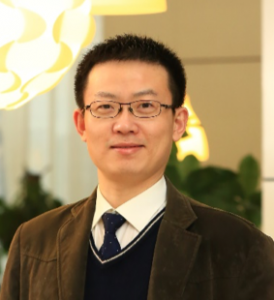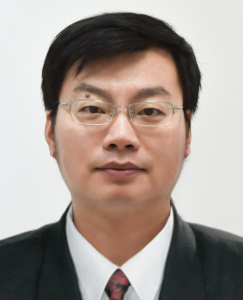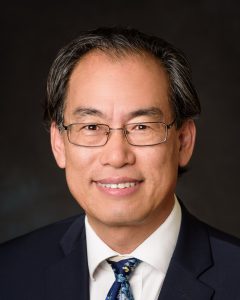
Zhongjie Wang is an associate dean,professor and doctoral supervisor of School of Computer Science and Technology, Harbin Institute of Technology, China. He got his PhD in Computer Science and Engineering in 2016. Currently his research interests include services computing, software engineering, software architecture, software and service evolution, mining software repositories, mobile and social computing. He has published more than 60 papers on academic journals and conferences such as IEEE TSC, IEEE ICWS, IEEE SCC and ICSOC. He played roles of program committee chair, publication chair, symposium chair and organization chair on several conferences such as CCF NCSC, CCF ICSS, IEEE SOSE and IEEE SERVICES. He is now associate secretary of Technical Committee of Services Computing, CCF.
Title:Bi-Directional Sensing of Mobile Service Ecosystem Evolution
Nowadays, mobile Apps have become a dominate channel of service delivery. Service providers publicize their Apps into App Store, and users use Apps to access services in terms of their personalized demands. This is a typical BIRIS service pattern in which massive service providers and massive users are aggregated and App store plays the intermediary role between them. For users, it is difficult to get to know timely the latest updates of massive services/Apps; and for service providers, it is difficult to get to know precisely the personalized and dynamically-changing preferences/interests of users, too. In our research, we put forward (1) a method to monitor the changes of App Store to get the latest updates on the features of Apps; (3) a method to recovery personal Apps ecosystem and discover changing personal preferences of users; (3) a method to extract useful feature requests from user reviews and give feedback to App developers to help them make decisions on their next release, including release time, features to be updated, and users’ possible reactions on the release. Such bi-directional sensing of mobile service ecosystem evolution would help users make decisions on “what mobile Apps I would use” and help App developers make decisions on “how to improve my Apps to better adapt to user preferences and feedbacks”.

Liang Zhou received his Ph.D. degree major at Electronic Engineering both from Ecole Normale Superieure (E.N.S.), Cachan, France and Shanghai Jiao Tong University, Shanghai, China in March 2009. Now, he is a professor in Nanjing University of Posts and Telecommunications, China.
His research interests are in the area of multimedia communications and networks, in particular, resource allocation and scheduling, cognitive and cooperative communications, cross-layer design, multimedia security, multimedia signal processing. He currently serves as an editor for IEEE Wireless Communications (2018-), IEEE Network (2018-), IEEE Transactions on Circuits and Systems for Video Technology (2013-), IEEE Transactions on Multimedia (2014-), and guest editor for IEEE Systems Journal (2011), EURASIP Journal of Wireless Communications and Networking (2011), ACM/Springer Multimedia Systems Journal (2010), and International Journal of Communications System (2010). He also serves as Co-Chair and Technical Program Committee (TPC) member for a number of international conferences and workshops (e.g., IEEE Globecom’10-12, IEEE ICC’10-12 etc.). He is a senior member of IEEE, IEEE MMTC, and IEEE MMSP.
Title: Personalized Video Streaming Strategy
Abstract: Personalized service has become the trend of network-based multimedia applications. Generally, there are two primary and essential technical challenges: i) different users usually require diverse user experiences, and ii) the network environments may vary with the time and place as well. To resolve this dilemma, this work proposes a personalized multimedia streaming strategy by intelligently categorizing the user via the data mining and adaptively predicting the transmission fashion in real time via the reinforcement learning. Specifically, on one hand, a class-level joint user classification and data cleaning scheme is proposed by frequently updating the training processes. On the other hand, a neural network model is constructed by making use of the reinforcement learning. As such, the video rate in the future can react quickly through the neural network model even if in a dynamic environment. Moreover, the objective representation of user experience is modelled from the user class instead of user himself, and it is used as the incentive information to train and improve the above neural network model. Extensive results validate the efficiency of the proposed scheme.

Min Song joined Stevens Institute of Technology in July 2018 as Professor and Chair of the Department of Electrical and Computer Engineering. Before joining Stevens, he was the David House Professor, Chair of the Computer Science Department and Professor of Electrical and Computer Engineering at Michigan Tech from 2014 to 2018. He was also the founding director of the Michigan Tech Institute of Computing and Cybersystems. Prior to joining Michigan Tech, Min served as a program director with the National Science Foundation (NSF) from 2010 to 2014. Min’s professional career comprises 28 years in academia, government, and industry. Throughout his career, Min has published more than 165 technical papers and held various leadership positions. He served as TPC Co-Chair for many IEEE conferences including ICC and GLOBECOM. He has been serving as a member of the IEEE INFOCOM Steering Committee. He is the recipient of NSF CAREER Award in 2007 and NSF Director’s Award in 2012. Min is an IEEE Fellow.
Title: Message Coverage Maximization in Infrastructure-based Urban Vehicular Networks
The success of vehicular networks is highly dependent on the coverage of messages, which refers to the trajectory of messages over time. Many of the existing works primarily performed in 1-D environments and merely focused on vehicle-to-vehicle communications to enhance the coverage in a given road network. Consequently, there still lacks a clear comprehension of using road infrastructures to improve message coverage in 2-D environments. In this talk, I will present a message coverage maximization algorithm (MCMA) that carefully deploys the roadside units to achieve the maximum message coverage in a 2-D environment. We first derive the analytical lower bounds of message dissemination distance for areas with different vehicle densities. The MCMA then utilizes the derived lower bounds to estimate the minimum spacing allowed between neighbor roadside units based on the prevailing traffic stream and delay constraint of applications. Also, we propose a disseminator selection algorithm for infrastructure-based urban vehicular networks to further improve message coverage. By selecting the desired types of applications, i.e., safety and non-safety, we obtain two different roadside unit deployment sets. Extensive simulation studies show that MCMA outperforms the alternative algorithms in terms of the message coverage and message dissemination speed.
